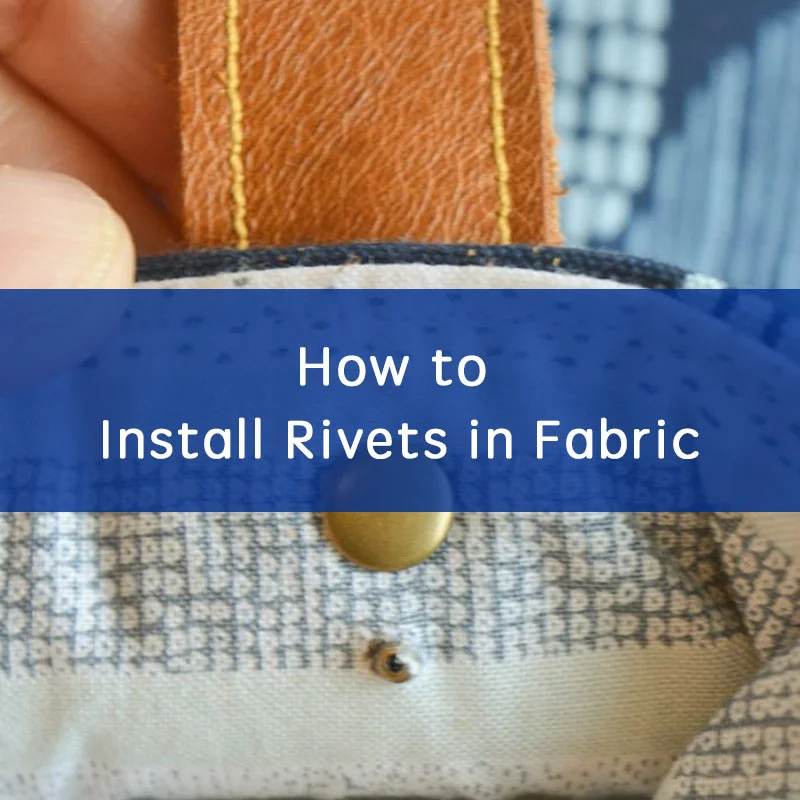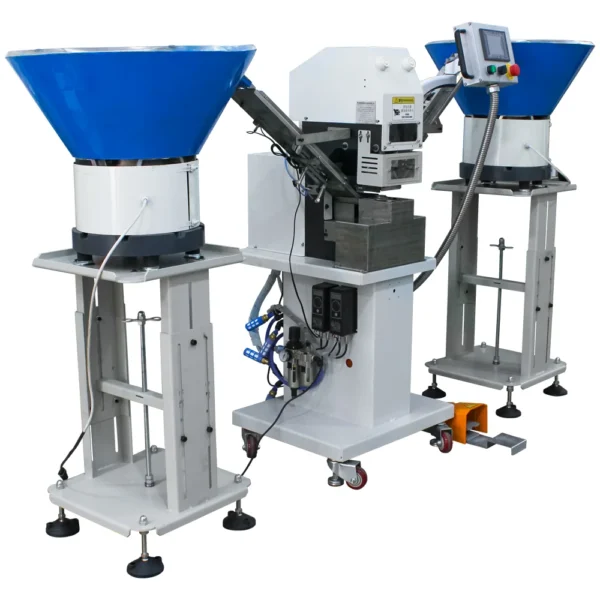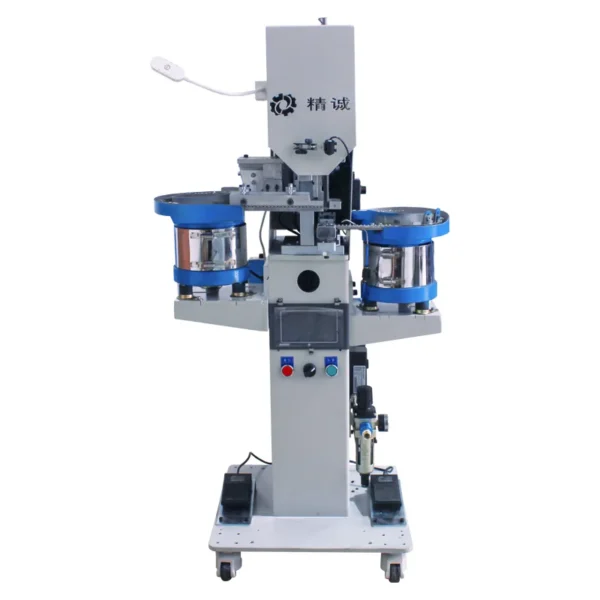How to install rivets in fabric is a topic of great interest to garment factories and DIY craftsmen.
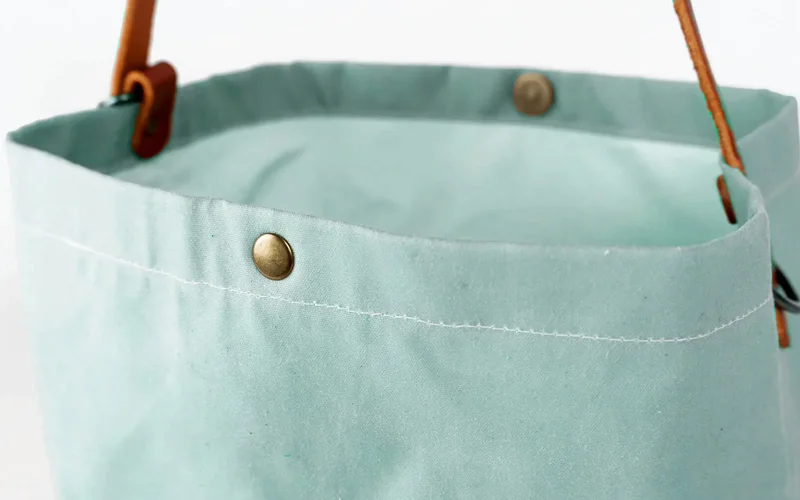
What Are Rivets?
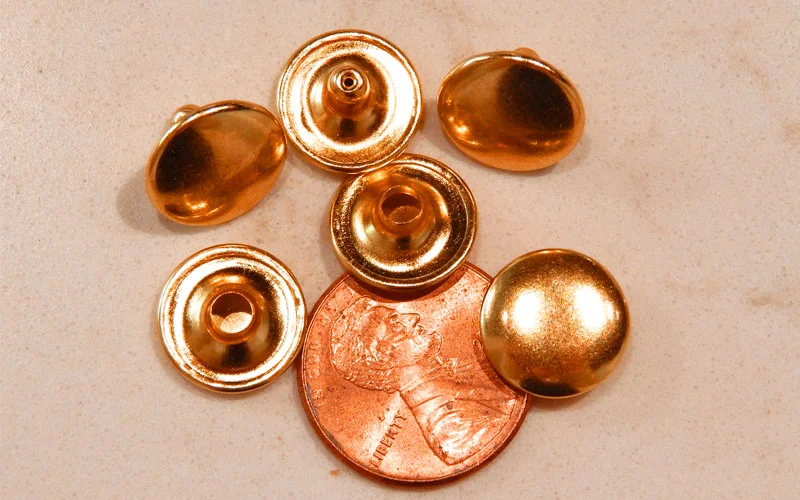
Rivets are fasteners consisting of a smooth cylindrical shaft with a head on one end. They are used to join materials together, creating a strong and durable bond. Rivets are widely used in various industries, including fashion, upholstery, and crafting, due to their reliability and aesthetic appeal.
Types of Rivets
- Solid Rivets: These are the most traditional type, made entirely of metal and requiring a hammer or rivet machine for fabric for installation.
- Pop Rivets: Also known as blind rivets, these can be installed from one side of the fabric, making them convenient for difficult-to-reach areas.
- Tubular Rivets: These have a hollow center and are often used in lighter fabrics and applications where less strength is required.
- Split Rivets: These have a split tail that spreads out when installed, providing a secure hold.
Common Uses of Rivets in Fabric
Rivets are used in a variety of fabric applications, including:
- Garments: For attaching pockets, straps, and decorative elements.
- Bags and Accessories: To reinforce stress points and add decorative touches.
- Upholstery: For securing fabric to furniture frames and adding a decorative finish.
Install Rivets in Fabric Methods: Tools or Automatic Rivet Machine
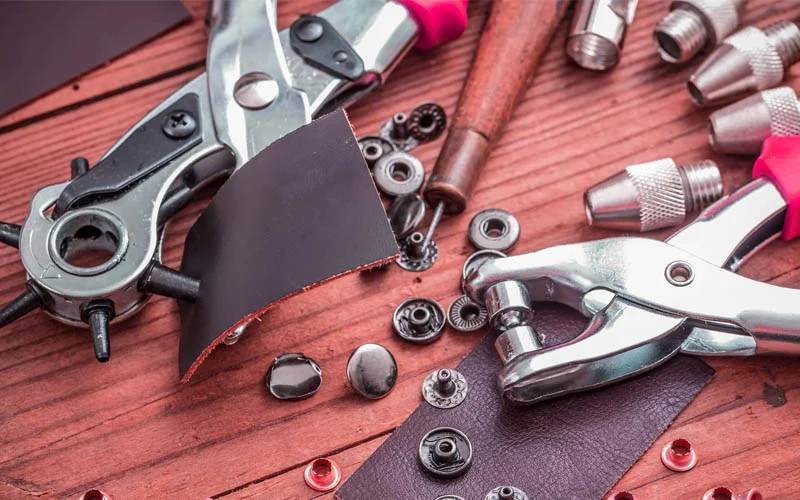
How to Install Rivets in Fabric, there are many ways, there are two main ways
Essential Tools
- Rivet Machine for Fabric: A tool used to compress and secure the rivet.
- Hole Punch: For making precise holes in the fabric.
- Hammer: Used in conjunction with the rivet machine for fabric.
- Measuring Tape: For accurate placement of rivets.
- Marker or Chalk: To mark the fabric where rivets will be placed.
Recommended Materials
- Rivets: Choose the type and size based on your project.
- Fabric: Ensure it is appropriate for riveting.
- Backing Material: Such as leather or interfacing, to reinforce the fabric if needed.
Automatic Rivet Machine(rivet machine for fabric)
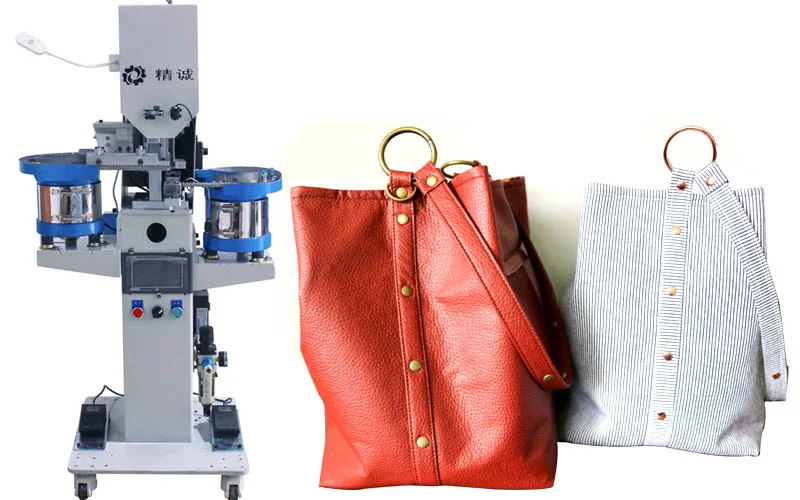
How to Install Rivets in Fabric, Using an Automatic Rivet Machine is the best form of efficiency, precision, and firmness.
Installing rivets in fabric using an automatic rivet machine is an efficient and precise way to apply rivets, especially in industrial or high-volume production settings. Here’s a detailed guide on how to use an automatic rivet machine for this purpose:
Materials Needed
- Fabric
- Rivets (including both male and female parts)
- Automatic rivet machine
Step-by-Step Instructions
1. Prepare the Fabric
Ensure the fabric is ready for the rivets. If the fabric is thin or delicate, you might want to reinforce the areas where the rivets will be placed using interfacing or an additional layer of fabric.
2. Load the Rivets into the Machine
Automatic rivet machines come with specific instructions for loading rivets. Generally, you’ll need to:
- Load the male parts (with the stem) into one hopper.
- Load the female parts (caps) into another hopper.
Ensure that the rivets are properly aligned and that the machine is set up to feed them correctly.
3. Adjust Machine Settings
Set the machine’s parameters according to the requirements of your fabric and rivet size. This includes adjusting the pressure, feed rate, and any other relevant settings to ensure the rivets are securely and accurately applied.
4. Mark the Fabric
Mark the positions where you want the rivets to be placed on the fabric. This can be done with a fabric marker or chalk. Some automatic rivet machines have alignment guides to help you position the fabric correctly.
5. Position the Fabric
Place the fabric in the machine, aligning the marked spots with the machine’s riveting area. Ensure the fabric is flat and properly positioned to avoid misalignment during the riveting process.
6. Activate the Machine
Activate the automatic rivet machine. Depending on the model, you might need to press a foot pedal, push a button, or use a touchscreen interface to start the riveting process. The machine will:
- Punch a hole through the fabric.
- Insert the male part of the rivet through the hole.
- Place the female part over the stem.
- Securely set the rivet by compressing the two parts together.
7. Inspect the Rivet
After the machine has set the rivet, inspect it to ensure it is properly secured and flat against the fabric. The rivet should not wiggle or be loose. If necessary, make minor adjustments to the machine settings for subsequent rivets.
8. Repeat the Process
Continue the process for all marked positions on the fabric. Automatic rivet machines are designed for high efficiency, so this step should be quick and consistent. how to Install Rivets in Fabric, Which of the above two methods is more suitable for your requirements? You can leave us a message.
Preparing the Fabric
Selecting the Right Fabric
Choosing the right fabric is crucial for a successful riveting project. The fabric should be sturdy enough to support the rivet without tearing. Common choices include denim, leather, canvas, and heavy cotton.
Pre-Treatment and Preparation
- Washing and Ironing: Pre-wash and iron the fabric to avoid shrinkage and ensure a smooth surface.
- Reinforcement: For thin or delicate fabrics, consider adding interfacing or a backing material to provide extra strength and prevent tearing.
How to Install Rivets in Fabric: Types of Rivets for Fabric

Metal Rivets
Metal rivets are the most durable and commonly used for heavy-duty applications. They provide a stronghold and a professional look, making them ideal for garments, bags, and upholstery.

Plastic Rivets
Plastic rivets are lighter and often used for decorative purposes or in projects where weight is a concern. They are easier to install but may not provide the same level of strength as metal rivets.

Decorative Rivets
Decorative rivets come in various shapes, sizes, and finishes. They are used to add a stylish element to fabric projects, enhancing both aesthetics and functionality.
How to Install Rivets in Fabric: Techniques for Different Fabrics
Light Fabrics
For light fabrics, use smaller rivets and consider reinforcing the area with interfacing to prevent tearing.
Heavy Fabrics
Heavy fabrics like denim or canvas can handle larger rivets. Ensure the holes are punched cleanly to avoid fraying.
Stretch Fabrics
For stretch fabrics, use flexible rivets and ensure the fabric is taut when installed to prevent distortion.
Tips and Tricks for a Professional Finish
What other tips can I learn about how to install rivets in fabric?
Ensuring Proper Alignment
Double-check measurements and markings to ensure rivets are evenly spaced and aligned.
Avoiding Common Mistakes
- Preventing Fabric Damage: Use a scrap piece of fabric to practice before riveting your main project.
- Correct Rivet Size: Ensure the rivet size matches the fabric thickness.
Enhancing Durability
Reinforce weak points with additional fabric layers or interfacing to enhance the longevity of riveted areas.
Maintenance and Care for Riveted Fabrics
Cleaning Tips
- Gentle Washing: Hand wash or use a gentle cycle to avoid stressing the rivets.
- Avoid Heat: Do not iron directly over rivets to prevent damage.
Repairing Rivets
- Loose Rivets: Use a rivet machine for fabric to re-secure any loose rivets.
- Replacing Rivets: Carefully remove damaged rivets and replace them with new ones.
(FAQs)
How to Put Rivets Into Fabric
To install rivets into fabric: mark placement, punch holes, insert rivet post through the fabric, place the cap on the post, and use a rivet setter with a hammer to secure it. Ensure the rivet is tightly set.
Can Rivets Be Removed and Reused?
While it is possible to remove rivets, reusing them is not recommended as it can compromise their integrity.
How to Choose the Right Size of Rivet?
Select a rivet size that matches the thickness of your fabric and the specific needs of your project.
Conclusion
Installing rivets in fabric can enhance the durability and aesthetics of your projects. By following the detailed steps and tips provided, you can achieve a professional finish with ease.
Don’t hesitate to experiment with rivets in your fabric projects. With practice, you’ll master the technique and add a unique touch to your creations.

